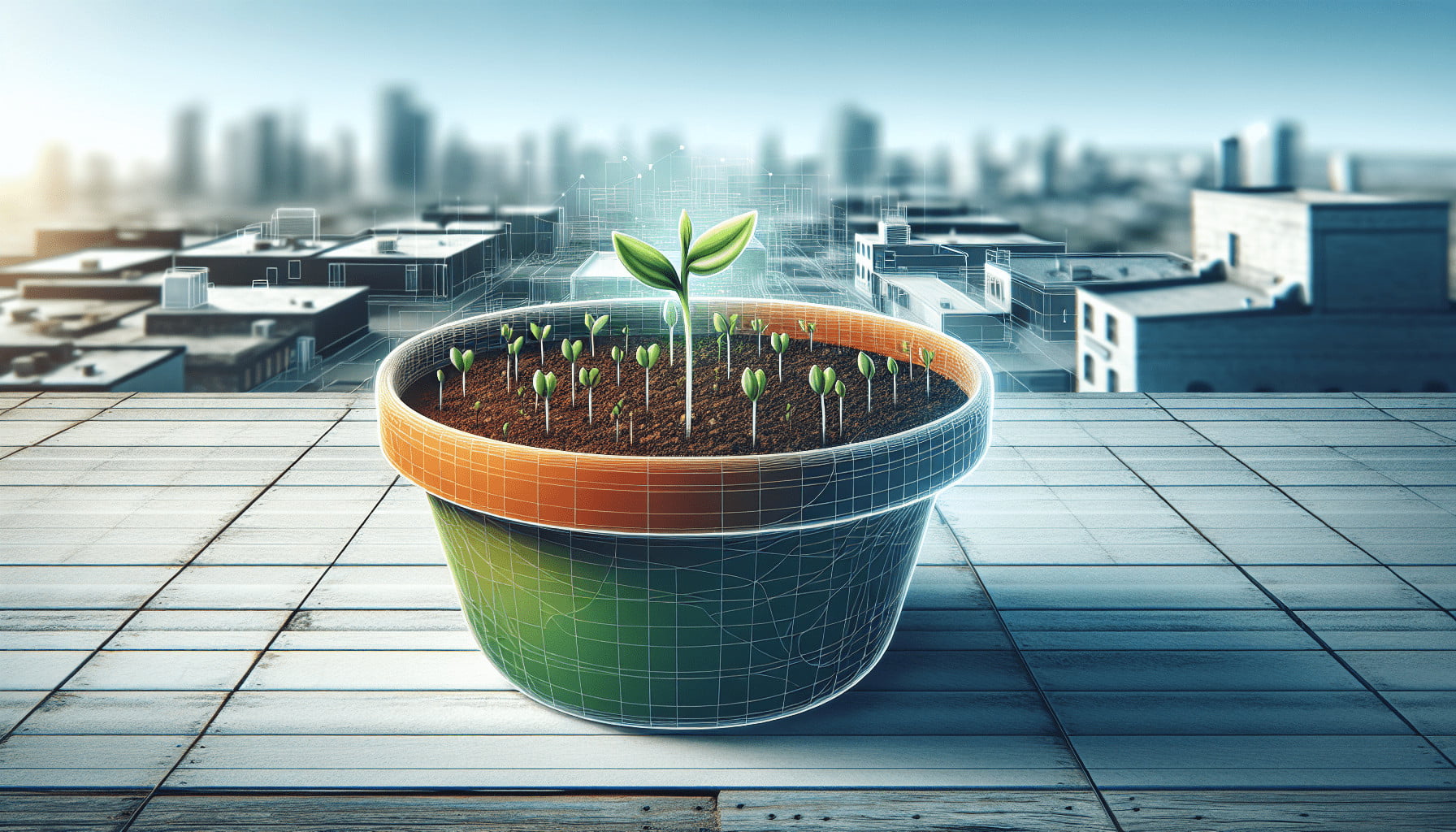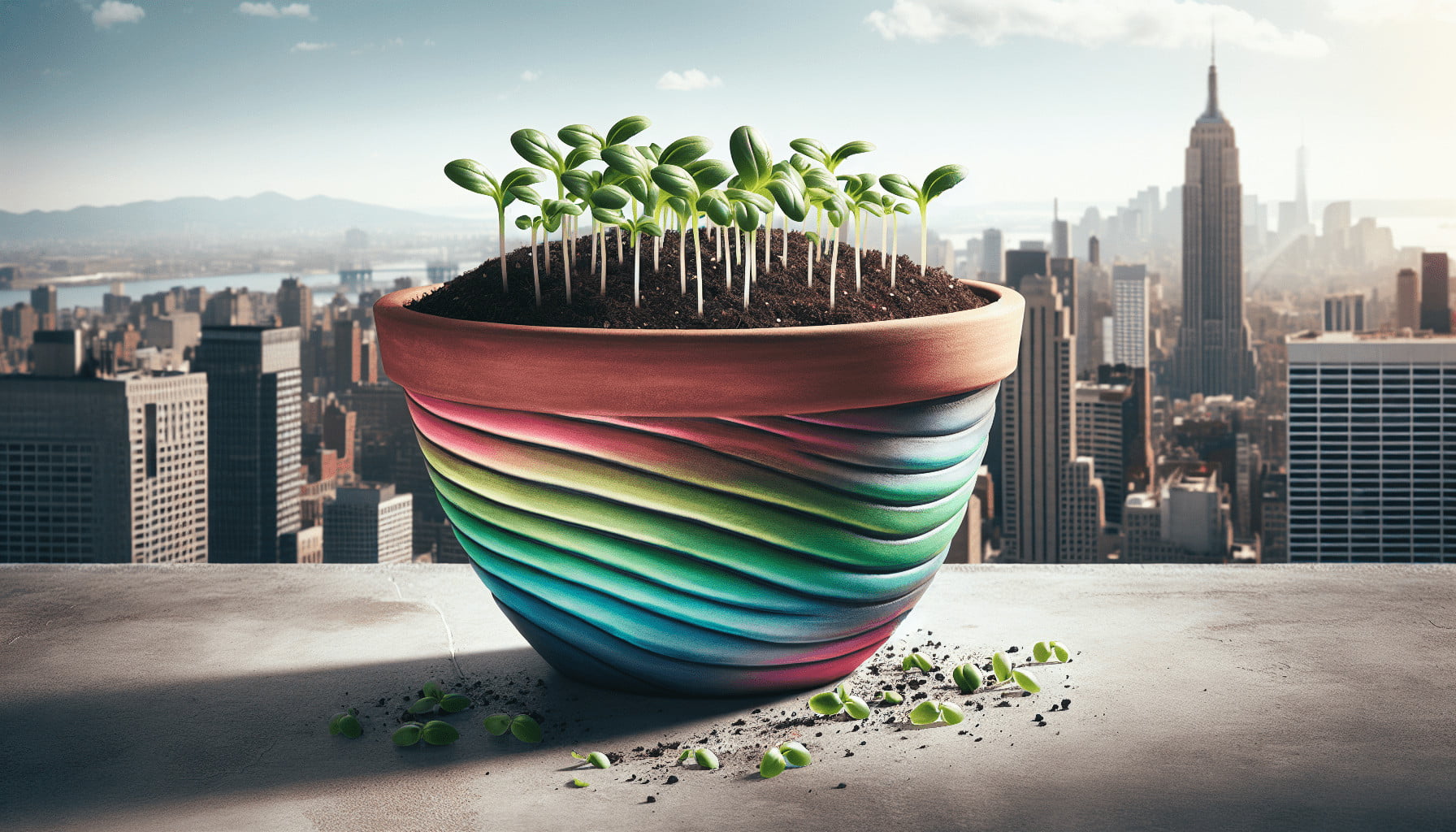Are you excited to transform your rooftop into a flourishing garden? “Tips for Starting Seeds in Rooftop Container Gardens” is your friendly guide to kickstart this green adventure with confidence. This article walks you through essential tricks for seed starting, from selecting the right containers to ensuring proper sunlight and watering techniques. By following these practical steps, you’ll be on your way to cultivating a lush, vibrant rooftop oasis that thrives season after season. Get ready to dig in and see your urban garden dreams come to life! Have you ever considered growing a garden on your rooftop? With the right tips and tricks, you can transform your rooftop into a lush, green paradise. Whether you’re a seasoned gardener or a beginner looking to dip your toes into container gardening, starting seeds in rooftop container gardens can be a highly rewarding endeavor. Let’s explore some key tips for successful seed starting in rooftop container gardens to ensure you get off on the right foot.
Benefits of Rooftop Container Gardening
Before diving into the nitty-gritty of seed starting, let’s take a moment to appreciate why rooftop container gardening might be the perfect choice for you. There are several benefits to growing your garden on the rooftop.
Better Use of Space
If you’re living in an urban area, space might be a luxury. Rooftop gardening allows you to make the most of an otherwise unused space, transforming it into a productive garden.
Improved Light Conditions
Rooftops generally have better access to sunlight compared to ground-level spaces that might be shaded by buildings and trees. This makes them ideal for sun-loving plants.
Enhanced Air Quality
Plants on your rooftop can act as natural air purifiers, removing pollutants and improving the air quality around your home.
Temperature Regulation
A rooftop garden can help regulate building temperatures by absorbing heat, reducing your cooling costs during summer months.
Essential Supplies for Seed Starting
Armed with the benefits of rooftop container gardens, let’s gather some essential supplies you’ll need to start your seeds.
Quality Seeds
Starting with quality seeds is essential for a successful garden. Look for seeds that are known for high germination rates and suitability to your climate.
Containers and Pots
The choice of containers is crucial. They should have good drainage and be of appropriate size to accommodate the mature size of the plants.
Potting Mix
Using the right potting mix ensures that your seeds have a good start. A mix that includes compost, perlite, and vermiculite will provide excellent drainage and aeration.
Watering Can or Hose
Having a reliable watering system will ensure that your seedlings receive the right amount of hydration. A watering can with a fine rose attachment is great for delicate seedlings.
Labels
Labeling your pots helps you keep track of what you have planted and when. This can be especially useful if you’re growing a variety of plants.
| Supply Type | Description |
|---|---|
| Quality Seeds | High germination rate seeds suitable for your climate |
| Containers and Pots | Containers must provide good drainage and sufficient space for mature plants |
| Potting Mix | A mix with compost, perlite, and vermiculite to ensure good drainage and aeration |
| Watering Can/Hose | A watering can with a fine rose attachment or a hose for consistent and gentle watering |
| Labels | Essential for keeping track of planted seeds and their planting dates |

Preparing Your Rooftop Garden
It’s crucial to prepare your rooftop environment to create optimal growing conditions for your seeds.
Assessing Your Rooftop Space
First, take some time to assess the available space. Pay attention to the amount of sunlight your rooftop receives and consider any potential obstacles.
Ensuring Structural Integrity
It’s important to ensure your rooftop can handle the weight of your garden. Containers filled with soil and water can be heavy, so consulting with a structural engineer may be necessary.
Setting Up Wind Protection
Rooftops can be windy places. Setting up barriers like trellises or using heavy containers can help protect your young seedlings from strong winds.
Choosing the Right Seeds
The success of your rooftop container garden depends greatly on the type of seeds you choose to grow.
Consider Your Climate
Choose seeds that are well-suited to your local climate. Check the hardiness zone for your area and select seeds accordingly.
Plant Preferences
Some plants are more suited for container gardening than others. Look for dwarf or compact varieties that thrive in confined spaces.
Growing Season
Timing is everything when it comes to growing plants from seeds. Research the best time to start your seeds in relation to your local growing season.
| Factor | Consideration |
|---|---|
| Climate | Choose seeds suitable for your local hardiness zone |
| Plant Preferences | Opt for dwarf or compact varieties suitable for container gardening |
| Growing Season | Synchronize seed starting with the local growing season |

Steps for Successful Seed Starting
Starting seeds can be a straightforward process if you follow these steps meticulously.
Step 1: Soak Your Seeds
Soaking your seeds in lukewarm water for a few hours before planting can soften the seed coat and speed up germination.
Step 2: Fill Containers with Potting Mix
Fill your containers with the prepared potting mix, leaving some space at the top to prevent overflow when watering.
Step 3: Plant the Seeds
Plant your seeds at the recommended depth. This information is usually available on the seed packet.
Step 4: Label Your Containers
Never forget to label your containers. This helps you identify what you’ve planted and monitor their growth stages.
Step 5: Water Gently
Using a fine rose attachment on your watering can, gently water the seeds. Avoid overwatering, which can lead to seed rot.
Step 6: Provide Adequate Light
Place your containers in a location that receives at least 6-8 hours of sunlight daily. Supplement with grow lights if necessary.
Step 7: Maintain Ideal Temperature
Keep the soil temperature within the ideal range for germination, usually around 65-75°F (18-24°C).
| Step | Description |
|---|---|
| Soak Seeds | Soaking seeds in lukewarm water for a few hours to speed up germination |
| Fill Containers | Fill containers with potting mix, leaving some space at the top |
| Plant Seeds | Plant seeds at the recommended depth as specified on the seed packet |
| Label Containers | Label containers to keep track of what has been planted |
| Water Gently | Use a fine rose attachment on a watering can for gentle watering, avoiding overwatering |
| Provide Light | Ensure containers receive 6-8 hours of sunlight daily or supplement with grow lights if necessary |
| Maintain Temperature | Keep soil temperature within 65-75°F (18-24°C) for ideal germination |
Caring for Your Seedlings
Once your seeds have germinated, the next step is to take good care of the seedlings to ensure their healthy growth.
Watering
Watering is crucial for the health of your seedlings. Keep the soil consistently moist, but not waterlogged.
Thinning
Once your seedlings develop a few leaves, you may need to thin them out. This prevents overcrowding and ensures each plant has enough space to grow.
Fertilizing
Seedlings typically do not require much fertilizer initially. However, once they have developed a few sets of true leaves, you can start feeding them with a diluted, balanced fertilizer.
Hardening Off
Before you transplant your seedlings to their final containers, slowly acclimate them to the outdoor environment by gradually increasing their exposure to sunlight and wind over a week.
Troubleshooting Common Problems
Even the best-laid plans can encounter issues. Here are some common problems and their solutions.
Leggy Seedlings
Leggy seedlings are a common issue caused by insufficient light. Ensure your seedlings receive enough sunlight or use grow lights to supplement.
Overwatering
Overwatering can cause root rot and other issues. Allow the soil to dry out slightly between watering sessions.
Pests and Diseases
Inspect your plants regularly for signs of pests or diseases. Using organic pest control methods, such as neem oil, can help mitigate these problems.
| Problem | Solution |
|---|---|
| Leggy Seedlings | Provide sufficient light, use supplemental grow lights if necessary |
| Overwatering | Allow soil to dry out slightly between watering sessions |
| Pests and Diseases | Regularly inspect plants and use organic pest control methods such as neem oil |
Transplanting and Maintenance
The next phase of your rooftop container gardening experience involves transplanting your seedlings and maintaining their health.
Choosing the Right Container
Choose a container that provides enough space for the mature plant. Make sure it has good drainage to prevent waterlogging.
Preparing the Container
Fill the container with a quality potting mix. You may also consider adding a slow-release fertilizer to provide consistent nutrients.
Transplanting Seedlings
Carefully remove the seedlings from their starter containers, being cautious not to damage the roots. Plant them at the same depth they were in their starter pots.
Regular Maintenance
Continue to water, fertilize, and inspect your plants regularly. Deadheading spent flowers and pruning can encourage more robust growth and flowering.
Beneficial Companion Plants
Companion planting is an age-old gardening practice that can benefit your rooftop container garden.
Herbs
Many herbs, such as basil and rosemary, can deter pests and improve the flavor of your vegetables.
Flowers
Certain flowers like marigolds and nasturtiums can attract beneficial insects and repel harmful ones, creating a healthier environment for your plants.
| Companion Plant | Benefits |
|---|---|
| Herbs | Deter pests, improve vegetable flavor |
| Flowers | Attract beneficial insects, repel harmful pests |
Eco-Friendly Practices for Your Rooftop Garden
Gardening is an excellent way to contribute to environmental sustainability. Here are some eco-friendly practices to consider.
Rainwater Harvesting
Collecting rainwater can save resources and provide your plants with natural hydration.
Organic Methods
Using organic fertilizers and pest control measures can protect your plants and the environment.
Recycling and Upcycling
Use recycled materials for containers and gardening tools to reduce waste and promote sustainability.
Conclusion
Starting seeds in a rooftop container garden is a fulfilling and sustainable way to make the most of your outdoor space. From selecting the right seeds to caring for your plants, the key to success lies in careful planning and consistent maintenance. With these detailed tips, you’re well on your way to creating a thriving rooftop garden that offers beauty, fresh produce, and a touch of nature in your urban dwelling. Happy gardening!
